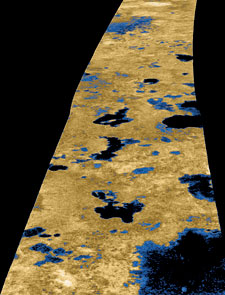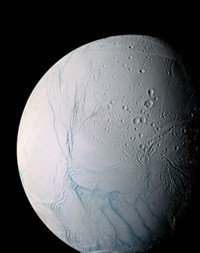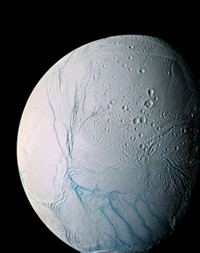Advertisement
Grab your lab coat. Let's get started
Welcome!
Welcome!
Create an account below to get 6 C&EN articles per month, receive newsletters and more - all free.
It seems this is your first time logging in online. Please enter the following information to continue.
As an ACS member you automatically get access to this site. All we need is few more details to create your reading experience.
Not you? Sign in with a different account.
Not you? Sign in with a different account.
ERROR 1
ERROR 1
ERROR 2
ERROR 2
ERROR 2
ERROR 2
ERROR 2
Password and Confirm password must match.
If you have an ACS member number, please enter it here so we can link this account to your membership. (optional)
ERROR 2
ACS values your privacy. By submitting your information, you are gaining access to C&EN and subscribing to our weekly newsletter. We use the information you provide to make your reading experience better, and we will never sell your data to third party members.
Physical Chemistry
Methane Lakes On Titan
Cassini spacecraft finds long-predicted bodies of liquid
by Elizabeth K. Wilson
January 8, 2007
| A version of this story appeared in
Volume 85, Issue 2

It's official: The northern hemisphere of Saturn's giant moon Titan is dotted with liquid hydrocarbon lakes. The finding vindicates a long-standing prediction that Titan, shrouded in dense nitrogen and methane clouds, should also have reservoirs of liquid—likely methane—on its surface.
Images showing the lakes, taken by NASA's Cassini spacecraft as it scanned the northern area of Titan with its cloud-piercing radar, were initially released last July. Now, after detailed scrutiny, scientists are confident that they're seeing about 75 lakes, some enclosed by craterlike rims and some intersected with riverlike channels (Nature 2007, 445, 61).
"They have so many characteristics expected of lakes," says Ellen R. Stofan, a planetary scientist at Proxemy Research in Laytonsville, Md., who is on the Cassini radar team.
The discovery also adds weight to the idea that cold, dense methane on Titan participates in a cycle of evaporation and precipitation as does water here on Earth. "This is the first body we have found in the solar system besides Earth that has an active hydrologic cycle—only in Titan's case, the fluid is methane, not water," Stofan says.
Cassini, which has been orbiting Saturn since June 2004, provided the first detailed view of Titan's surface, but no lakes or oceans were seen initially. A small lander piggybacking on Cassini, the Huygens probe, touched down on Titan's surface two years ago, snapping pictures that showed an eroded, dry landscape with drainage channels that indicate liquid had once flowed there. Scientists began to wonder if Titan's methane source lay underground.
According to Cassini scientists, some of the depressions are formed by volcanism and some lakes may be fed by surface drainage and rainfall, whereas others, without river channels, may be fed by a subsurface methane table.
Cassini is scheduled to fly by Titan 22 more times. "But to really understand the chemistry of these lakes, we will need a follow-up lander mission to directly measure their composition," Stofan tells C&EN.





Join the conversation
Contact the reporter
Submit a Letter to the Editor for publication
Engage with us on Twitter